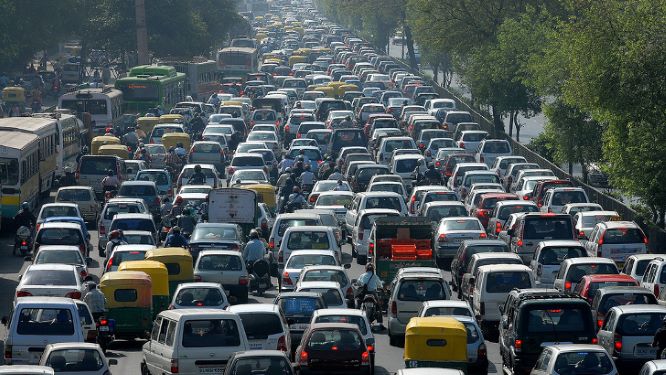The Micro & Macro Effects of Driving
My son and my mother reached the same milestone this year. Although there is a 60+ year difference in ages, they were equally elated with a new-found freedom. The reason for this? They each received a driver’s license.
To my 16 year old son, the driver’s license is a rite of passage. He sees it as a transition step from boyhood to manhood. But it is more than that – at least when the license is coupled with access to a car. It is a step towards independence. A young man with a car is no longer dependent upon others for a ride to school, or to friends, or simply to a store. He can even get his own pizza.
My mother had her license for over 60 years. But it expired while she was in a post-surgery convalescent facility. The elderly cannot generally renew a driver’s license by mail, and her recovery prevented a personal appearance at the Secretary of State’s office
She was very anxious to renew her license, even though she knew that she was physically unable to drive. After a year-long convalescence, she remained barely mobile. She could not take care of her house and moved permanently to an assisted-living facility. But she still wanted her license.
She insisted that I drive her to the Secretary of State and, God knows why, thought she could bluff her way through the examination. The clerk took one look at her, as she inched her way to the counter with the aid of her walker, and immediately called for the supervisor. To my mother’s surprise, and as I expected, the supervisor refused to re-issue the license without a doctor’s approval.

My mother went through a long period of depression, followed by an equally long period of determination. She diligently pursued rehabilitation and gradually regained much of her prior strength. After nearly a year without a license, she received the doctor’s approval and re-applied for the license. This time to my surprise, and as she expected, the license was approved.
She too was looking for freedom and independence. She wanted to be able to go to church, or to the store, or wherever, without depending upon me or her friends for transportation.
But it was more than that for her. She saw the loss of her license as a step in the aging process. Within a few years, she lost her husband, her health and her home. The expiration of her license meant a loss of her mobility and her independence.
For most senior citizens, this is a permanent loss. Fortunately, she recovered sufficiently to regain her license and, at least for now, her mobility. She, at 80, and my son, at 16, have this in common.
The Micro and Macro Effects of Freedom of Mobility
There is an interesting contrast between the micro effect of the automobile and freedom of mobility, and the macro effect of automobiles and the broader societal consequences.
I watched a documentary on Marshall McLuhan (McLuhan’s Wake) the other day. One of his many theories was the law of unintended consequences. There are many examples of this law’s application, but one of them is the construction of highways to ease traffic congestion. The unintended consequence is that the newly constructed highway generates more traffic, which creates more traffic congestion.
Consider these thoughts from Bruce Catton nearly 30 years ago in Michigan: A Bicentennial History.
“Today’s cities, in the heart of automobile land, were built when men were thinking about something else. They built the automobile; and the automobile has become the instrument through which the whole face of the earth is changed. It changes because men can go where they will. Men who can go where they will look for more comfortable places to work and play and live; in the finest tradition of this land of milk and honey and riches-for-the-taking, they use up what they have, through the husk away, and go on to fairer fields.”

In looking at the early 20th Century:
”The direct results were devastating. In the course of one generation, the whole population was put on wheels. People suddenly found that they had complete, unfettered mobility, restrained only by the danger of multiple-stage collisions – which meant that the entire transportation system was recast. Inasmuch as the whole organization of modern society depends on the means people use to get themselves and their goods from here to there, this meant changes in the whole social structure – dramatic, fundamental changes, affecting everything each human being does from birth to death. All of this was brought about with complete social irresponsibility. Nothing was planned; people conditioned to want fluidity of movement above all things just reached out and took it when they got the change. Quite early in the game, they learned that too much fluidity can cause paralysis; in other words, that when too many automobiles try to use the same roads there were monstrous traffic jams. The remedy, of course, was to build more and more roads, which in turned called out more and more automobiles and created larger and more expensive traffic jams, which compelled the building of still more roads, which …
This mobile society turned out to be the most prodigal the world has ever seen. Every man can be put on wheels only if nobody stops to figure out what it is all going to cost. (The machines themselves can be built cheaply enough, heaven knows: it is using them, and adjusting to them, that is so expensive.”
And perhaps prophetically:
”The society that did all of this had obviously committed itself to movement, regardless of cost. The oceans of fuel used come from half the world away, and it may be time to reflect on their eventual exhaustion and on social anarchy that may result when a highly mobile society abruptly finds that it cannot move.”
